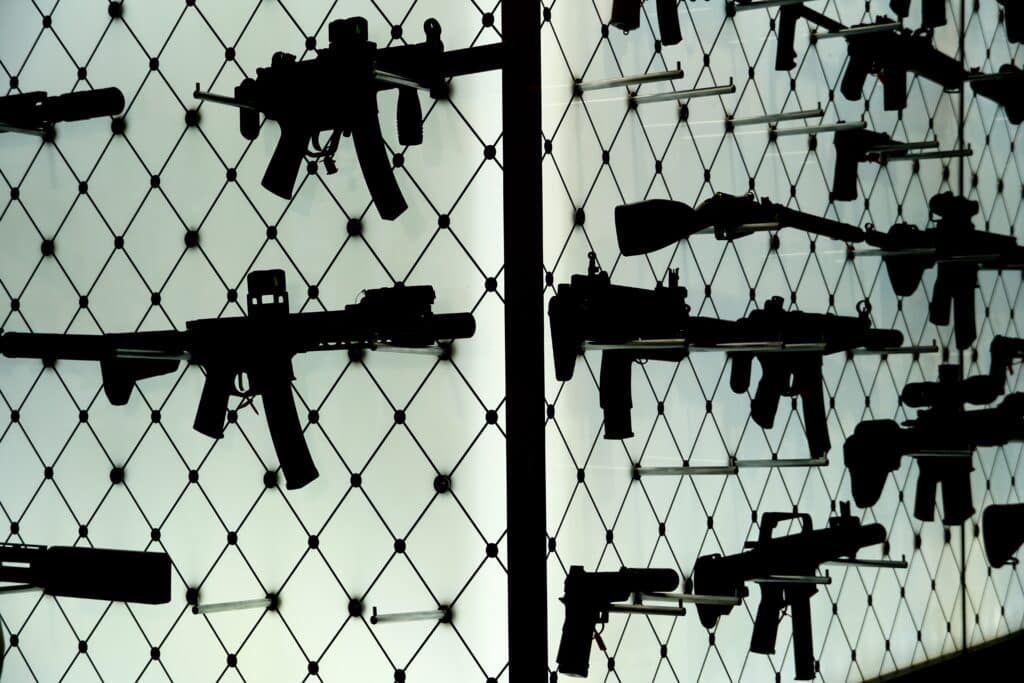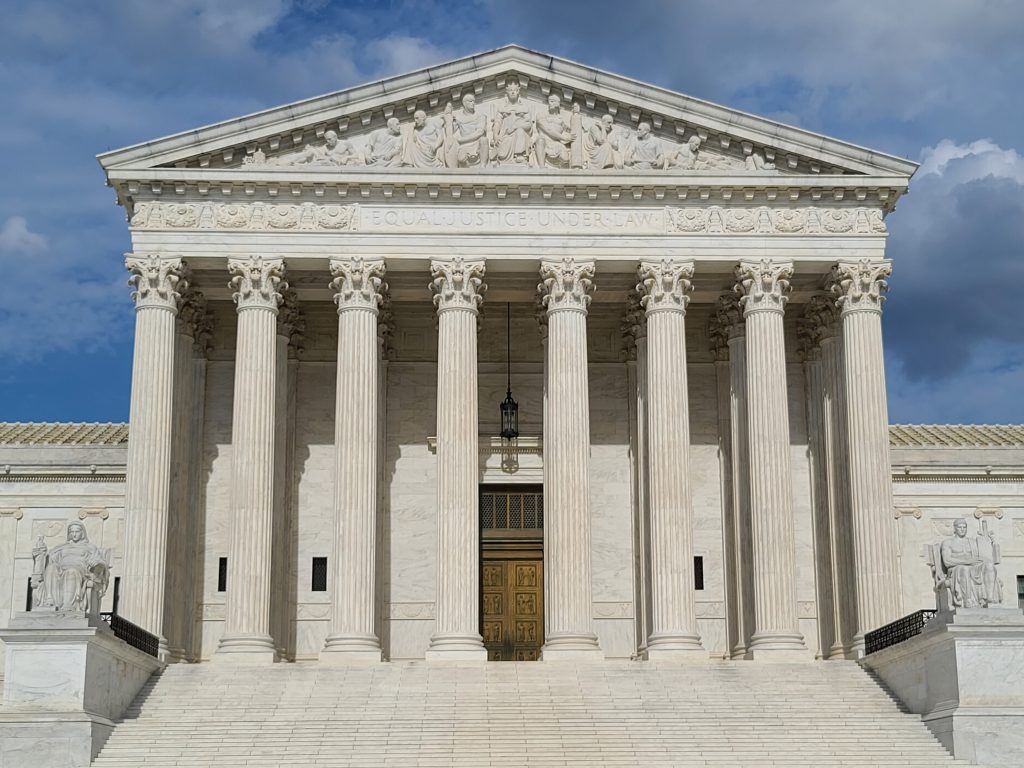I hope you had a great 4th of July! I got some range time in this week and then headed to a friend’s home for a cookout. So, my holiday was pretty darn nice.
The gun-rights activists behind some of the highest-profile Second Amendment cases may have needed to blow off some steam by blowing up some fireworks, though. That’s because, after handing them a defeat in Rahimi, the Supreme Court decided not to take up any of the gun cases on its docket. Still, Contributing Writer Jake Fogleman explains why they have reason for hope in a statement issued by Justice Clarence Thomas.
Gun-rights lawyer Matt Larosiere also explains how the Court striking Chevron deference might affect firearms litigation in the future. He argues it might not be as much of a panacea as some people have long assumed.
Plus, Tim Mak of The Counteroffensive joins the podcast from Ukraine to discuss a gun-rights push in the country’s parliament. And I look at Joe Biden and Donald Trump’s decision not to bring up gun policy during the first debate.

Supreme Court Sidesteps Pending Gun Cases
By Jake Fogleman
The Supreme Court has decided against providing further guidance on the Second Amendment—at least for now.
The High Court released its final orders list for the term on Tuesday. It featured the Justices’ decision to grant, vacate, and remand (GVR) seven cases dealing with laws prohibiting specific people from having guns back to the lower courts for new decisions. They also vacated and remanded a case dealing with New York’s concealed carry restrictions and denied a request to review a collection of cases on Illinois’ ban on the sale of AR-15s and other popular firearms.
The orders list is the earliest indication of how active the Court plans to be on the Second Amendment moving forward. After a session that featured three gun-related cases—but just one Second Amendment case—the Court’s decision to kick the can on addressing a series of outstanding questions suggests a limited appetite among the Justices for further refinement of its Bruen test at this time.
Click here to continue reading.

Analysis: SCOTUS Passes Up Gun Ban Case… For Now [Member Exclusive]
By Jake Fogleman
Gun-rights advocates hoping the Supreme Court would finally weigh in on the question of so-called assault weapon bans were once again left disappointed this week. However, Justice Clarence Thomas offered them a lifeline.
On Tuesday, the Supreme Court cleared its plate of eight pending gun case petitions by ordering them back down to the lower courts to be reheard in light of its Rahimi decision. A separate collection of gun cases—six lawsuits collectively challenging municipal and state-level AR-15 and magazine bans in Illinois—got a different treatment. The Court flatly denied their appeals.
At first glance, that might seem like a devastating blow to gun-rights advocates fighting against hardware bans. After all, the cases dealing with prohibited person categories and New York’s legally dubious concealed carry restrictions were given the GVR treatment—suggesting the Justices are paying close attention to those issues—while the hardware ban cases were instead given the cold shoulder. Does that mean the Supreme Court is just not interested in dealing with AR-15 and magazine bans?
Not necessarily.
If you’re a Reload Member, click here to read more. If not, buy a membership today for exclusive access!

Analysis: The Death of Chevron and the Future of Gun Litigation
By Matt Larosiere
Friday brought a rare instance of a no-nonsense Supreme Court decision unambiguously reversing prior precedent in a way that has far-reaching consequences–but maybe not for gun policy.
Loper v. Raimondo saw the Court stating, in no uncertain terms, that Chevron, “a decaying husk with bold pretensions,” is overruled. Twitter–and my email inbox–were ablaze with theories about what this might mean for gun litigation. In all likelihood, though, the impact on Second Amendment cases will be more muted than many expect.
It’s easy to understand why people might think Chevron would have had an outsized impact on the firearm space. After all, it seems as though the ATF–an administrative agency–has been the primary source of tumult for gun owners over the last three administrations. Where an admin agency is the source of pain, it seems natural to presume a legal concept that advantages administrative agencies would be a huge lever in that conflict. But practitioners and astute spectators alike would observe that Chevron hasn’t been invoked in the gun space very often at all.
Simply stated, Chevron’s death won’t be as dramatic as some commentators expect in the gun law arena largely because the ATF has been expressly disclaiming and attempting to avoid its application for years. Likely knowing Chevron was on shaky ground, and because its application to laws with criminal penalties is inappropriate, the government has fairly consistently simply asserted in gun cases that its legal arguments are ordinary legal arguments rather than agency arguments entitled to deference under Chevron.
To understand the tension here, it’s important to understand what Chevron actually did.
Podcast: The Push to Codify Ukrainian Gun Rights (Ft. The Counteroffensive’s Tim Mak)
By Stephen Gutowski
This week, we’ve got a guest coming to us straight from the middle of a war zone.
Tim Mak joins the show from Kyiv, Ukraine. He’s an experienced war correspondent who has worked for leading news outlets and founded his own independent publication just over a year ago to cover the war in Ukraine on the ground. The Counteroffensive publishes original reporting from inside the country and recently profiled the man behind an effort to install gun-rights protections in the nation’s law.
You can listen to the show on your favorite podcasting app or by clicking here. Video of the episode is available on our YouTube channel.
Plus, contributing writer Jake Fogleman and I discuss the lack of discussion on gun policy during the first presidential debate between Donald Trump and Joe Biden. We also cover the ongoing fallout from the Supreme Court’s Rahimi decision, including Justice Thomas’ dissent and the DOJ’s request for more clarity from the Court on gun rights for felons. Finally, we discuss the NRA’s improved political fundraising numbers, its tone shift on gun rights for felons, the ATF’s improved approval times for suppressors, and a Georgia jury’s decision to find gunmaker SIG liable for negligent discharges.

Analysis: Candidates Mum on Guns at First Debate [Member Exclusive]
By Stephen Gutowski
The first presidential debate showed Americans a lot about the two men again vieing to run the country, for better or worse. But neither candidate sought to differentiate themselves on gun policy.
That’s a bit surprising since President Joe Biden and former President Donald Trump have cultivated gun positions that are polar opposites. Biden has even made his firearms policies a greater part of his re-election bid in recent months. Meanwhile, Trump leads on the question of who would handle gun policy better and has continued to court gun voters through the NRA.
But neither man attempted to pivot the conversation to guns during the hour-and-a-half debate.
If you’re a Reload Member, click here to read more. If not, buy a membership today for exclusive access to this piece and hundreds of others!
Outside The Reload
Muñoz and Alienage-Based Gun Restrictions | Duke Center for Firearms Law | By Andrew Willinger
California’s Credit Codes for Gun Shops Now in Effect | Bearing Arms | By Cam Edwards
California’s new gun and ammo tax takes effect | Axios | By Kate Murphy
That’s it for this week in guns.
I’ll see you all next week.
Thanks,
Stephen Gutowski
Founder
The Reload






